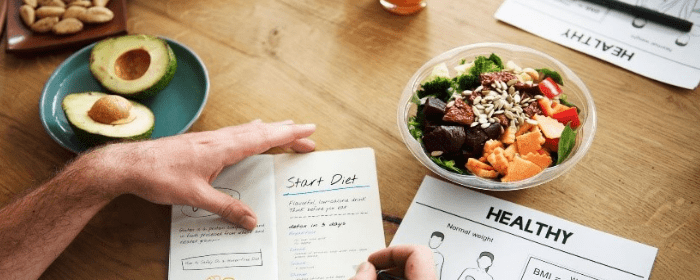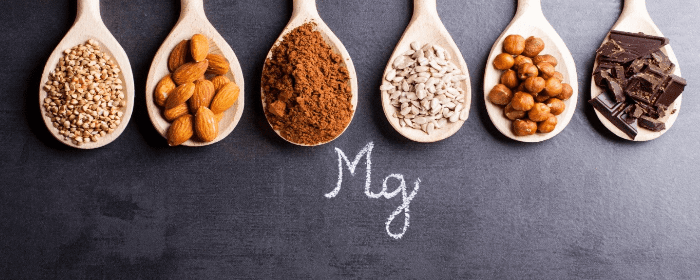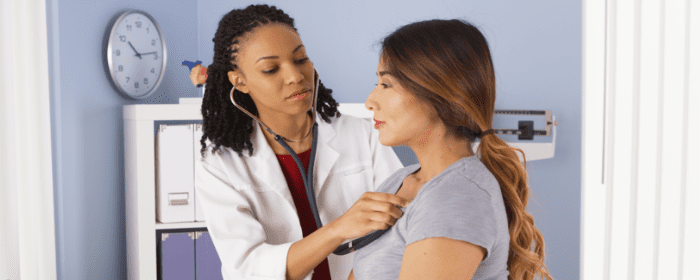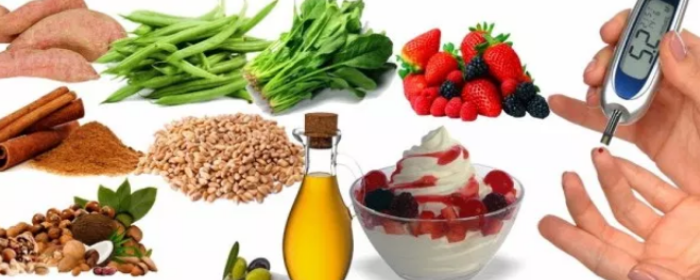
by admin | Aug 23, 2018 | Health Awareness
Keep Track of Your Weight
If you are on a quest to losing weight, keeping track of your daily weight may help. A study showed that those who successfully lost weight had been measuring their weight regularly and also had support from others who were trying to lose weight too. Keeping a track of your progress and making changes to your diet can be effective.
Practice Good Oral Health
Gingivitis and gum disease are linked to various problems like diabetes, heart disease, pregnancy complications and even pancreatic cancer. To lower the risk of gum disease, brush your teeth twice a day, floss on a regular basis and make sure to visit the dentist twice every year.
Wear Sunscreen
Wear a sunscreen daily, even in the winters, whether it is raining or snowing. Snow reflects almost 80% of the sun’s harmful rays through the clouds. Sunscreen helps prevent skin cancer and aging.
Eat Fish
Cold water fish like mackerel and salmon are highly rich in omega-3 fatty acids. They can also be found in walnuts and have been proven to reduce the risk of heart disease, stroke and also prevent dementia. Try consuming fish twice a week but if you are not fond of eating fish then you can also try supplements.
Exercise Daily
It is recommended to include 30 minutes of physical activity daily, to meet this requirement you can break these 30 minutes into smaller intervals. Try to include it in your daily routine by taking the stairs instead of the elevator, parking the car further from the entrance, or taking a walk to a nearby store instead of using the car. Regular exercise has proven to reduce the risk of diabetes, heart disease, cancer and anxiety.
Visit the Doctor Regularly
Visit your doctor regularly for tests that are appropriate to your age, genetic risks, sex and other factors. Many conditions like diabetes and heart disease can be treated successfully if they are diagnosed in early stages.
Keep a Food Diary
If you are trying to reach a healthy weight, keep a food diary to ensure more success. A study conducted on 1700 people showed that those who kept a daily food journal successfully lost almost 20 pounds, which was twice as much as those who did not.
Wash Vegetables and Fruits
Make sure to always wash fruits and vegetable before eating or cooking them. This reduces the chance of ingesting a bacteria or other chemical residue present. Wash them thoroughly even if you plan to peel them so the knife does not transfer any harmful bacteria from the skin.

by admin | Aug 20, 2018 | Health Awareness
What is Magnesium?
Magnesium is a mineral required by the body to work efficiently. It aids the body in carrying out almost hundreds of different processes like controlling how our nerves and muscles function. Magnesium keeps the bones strong, maintains good heart health and also keeps the sugar levels in the blood under control. It also maintains the vitality of the body. It is present in various drinks and foods but if your body requires more of it then your doctor can also suggest you take supplements. In this article, we review the benefits and sources of magnesium.
How Much is Required?
Grown men under the age of 31 require 400 to 420 milligrams of magnesium daily. An adult woman requires around 310 milligrams of magnesium and if she is pregnant then another 40 grams is needed. Children can require anywhere from 30 to 410 mg depending on their gender and age. It is best to talk to their pediatrician to find out how much your child may require according to their need.
Are You Getting the Required Dose?
It is observed that two-thirds of the western world does not have the proper required intake of magnesium, this leads to a variety of health related issues like high blood pressure, diabetes and migraines. People who are older in ages tend to have a higher deficiency of magnesium than others because their bodies expel a large amount of magnesium than normal.
Can You Take Too Much Magnesium?
Healthy individuals can flush out any extra magnesium from the body through their kidneys but still, a very high intake of magnesium can lead to nausea and cramps. Taking magnesium as a supplement, it is best suggested to not take more than 350 mg per day. Be cautious when using antacids and laxatives that contain magnesium to avoid too much intake that may lead to sickness.
Benefits of Magnesium
Stronger Bones
Magnesium is required by the body to produce new bone cells, research also shows that magnesium protects the body against broken bones, bone loss, and osteoporosis. Studies have also revealed that women who have osteoporosis have a very low level of magnesium than normal.
Fights Inflammation
Inflammation is the reaction of the body’s immune system to heal the wounds and fight off viruses. But if the body is always under inflammation then this can lead to issues like diabetes, arthritis and heart diseases. Magnesium helps in the prevention of inflammation.
Protects the Heart
Magnesium aids in pumping the blood. The right amount of magnesium in the blood decreases the chance of a heart disease, stroke, and irregular heartbeat. Magnesium can also help maintain good cholesterol levels in the blood as well as relax the walls of the blood vessels to keep blood pressure under control.
Prevents Migraines
Magnesium can prevent blood vessels from tightening and lowers the pain chemicals in the brain. Low magnesium levels could make you more prone to getting migraines. A recommended dose of 400 to 500 mg of magnesium may help to keep migraines away. But consult with your physician to determine the right level for you.
Lowers Risks of Diabetes
Insulin is the hormone responsible for keeping the blood sugar levels under control. Magnesium aids insulin in working efficiently. Studies reveal that people who took the right amount of magnesium were least likely to develop diabetes or could improve symptoms of those with diabetes.
Food Sources of Magnesium
Nuts and Seeds
An ounce of cashews and almonds can give you almost 80 milligrams of magnesium. Other sources can include pecans, peanuts, flax seeds, pumpkins seeds and sunflower seeds. You can garnish a salad with these nuts and seeds, you will get a healthy amount of fats, antioxidants, and fiber that is heart healthy.
Whole Grains
Regarding nutrition, whole grains outweigh benefits than white bread. They are rich in fiber and magnesium. Just two slices of wheat bread can give you 45 milligrams of magnesium, half cup of oatmeal can give you 30 milligrams and half cup of brown rice contains around 40 milligrams of magnesium.

by admin | Aug 15, 2018 | Health Awareness, Heart Failure
Heart disease is one of the most prevalent heart condition that affects both genders, but there are certain heart conditions that affect only women and have different symptoms. For women, what are the signs to look for and what can they do to manage and be preventative.
Warning Signs
Many believe that during a heart attack one experiences severe chest pain, however, this may not be the case for all. Women usually have less obvious signs like shortness of breath, pain in the back, upper belly and jaw. Some may also feel light-headed, dizzy or nauseous.
Broken Heart Syndrome
The official term for this condition is stress-induced cardiomyopathy, and it’s more likely to happen to women as compared to men. It’s caused by an abrupt release of stress hormones, and it happens after very emotional events like divorce or a death in your family. A part of your heart gets bigger and can’t pump blood properly. This can cause intense chest pain, but with quick treatment, this can lead to a full recovery.
SCAD
This condition is called the spontaneous coronary artery dissection which occurs when one of the blood vessels of the heart tears. This can lead to a block or slowing down of the blood flow causing intense pain the chest along with many other symptoms. SCAD is a serious heart condition that requires immediate treatment. This happens more in women who have recently given birth.
Menopause
Menopause doesn’t cause heart disease, but the body changes a woman experiences may make her more likely to develop the condition. As the levels of estrogen in the body decrease, arteries become stiffer. After menopause, the belly fat, blood pressure and bad cholesterol levels increase so it is suggested to stay active to keep the heart healthy.
Inflammation
If you have a condition like lupus or arthritis that cause inflammation, then you have more risk to develop a heart disease. By managing inflammation and avoiding steroids, this can help prevent developing heart disease. It is suggested to consult with your doctor for the best way to protect your heart.
Diabetes
Your chances of developing heart disease is greater if you have diabetes. The sugar in the blood slows down the flow of oxygen and this can lead to a buildup of plaque in the arteries. Women who have diabetes are generally over weight with high cholesterol and blood pressure. Try to keep your sugar levels and weight under control with proper diet and exercise.
Depression
Suffering from depression can also increase your chances of having heart disease. It can cause you to stay inactive and neglect your health. The continuous stress and anxiety can have a bad impact on the heart. Talk to your doctor if you think you need help managing depression.
Being Thin Does Not Guarantee a Healthy Heart
Yes, women who are overweight are more likely to have a heart condition but being thin doesn’t eliminate you from the risks for high blood pressure and cholesterol.
Steps for Prevention:
Check Your Family Tree
If women in your immediate family, like your sister or mother, have had a heart condition before the age of 65 or if they’ve had a stroke, you may have a greater chance to have heart disease. It Is best to let your doctor know your family history so they can help you lower your chances.
Quit Smoking
Smoking can also increase the odds of the condition as well as your chances of a stroke by 25%. Smoking damages the blood vessels and increases blood pressure, which can lead to blood clots.
Watch Your Cholesterol
Cholesterol can build up in the arteries causing plaque to build up and harden and clog the arteries. By taking a routine blood test, you can be aware of your cholesterol levels. If your bad cholesterol levels are high, try making small changes like reducing sugar and fat intake while increasing more frequent exercise.
Manage a Healthy Weight
Eat fresh foods that are low in calories, fats and sodium. Take heart healthy cooking classes or watch online videos. Find activities that are fun and active, like going for a walk with a friend or taking a Zumba class.
Fitness Matters More After 40
Making small changes to your daily routine can significantly help. Even if you have never worked out, take the necessary steps to maintain your fitness after you hit your 40s. You can cut your chances of heart conditions by engaging in regular exercise.
Pregnancy Heart Protection
During pregnancy, the heart pumps more blood than usual. This can lead to excessive stress on the arteries and heart. Women who already experience valve issues should look out for signs like a fast heart rate, shortness of breath and infections during pregnancy. If you have high blood pressure be careful as it can lead to a condition called preeclampsia that can be of threat to both the mother and the baby.

by admin | Aug 13, 2018 | Diabetes, Health Awareness
Making necessary diet changes to keep the blood sugar levels under control is key especially for those with diabetes. Focus on consuming foods that improve your condition and keep your diabetes under control. There are some key foods identified by researchers that are known to improve the condition and reduce the risk:
Blueberries
The tiny berries are a source of daily good carbs and research also shows that eating blueberries improves sensitivity to insulin. The phytochemicals present in blueberries also have special anti-inflammatory properties that are known to reduce the risk of cardiovascular diseases especially the ones associated with diabetes type 2.
Oranges
Incorporate more clementines, grapefruits, and oranges in your daily diet. Research shows that consuming citrus fruits can have a long-term positive effect on blood sugar and cholesterol levels. Research conducted at Harvard University showed that consuming the whole fruit with the pulp rather than just the juice reduces the risks of diabetes type 2. This is due to the presence of their soluble fiber and the compound called hesperidin which is an anti-inflammatory by nature.
Dark Chocolate
Is it possible that a sweet treat like chocolate can control glucose levels? Yes, studies show that high-quality dark chocolate if consumed daily can decrease blood pressure and fasting insulin levels. This is achieved due to the presence of the compound called polyphenols. Try replacing unhealthy carbs with a high-quality low sugar dark chocolate to improve the glucose levels while also satisfying your taste buds.
Chickpeas
Chickpeas are quite well-known for having a low glycemic index, making it very beneficial for diabetes. New research also suggests that consuming legumes has a very therapeutic effect on the body. Compared to others, people who consume a cup of legumes daily showed a significant decrease in blood pressure and hemoglobin values.
Olive Oil
Replacing unhealthy fats with good healthy fats is suggested for everybody but especially for those who have diabetes type 2. Consumption of extra virgin olive oil has been proven to be associated with the decreased risk of diabetes and improves glucose levels because of its anti-inflammatory properties. Try to incorporate olive oil as much as possible in your diet like including it as a dressing for your salads.
Plant-Based Meals
It is observed that vegetarians have a lower risk of diabetes 2 development. A study published in 2012 showed that a diet that is mainly centered around fresh fruits, nuts, vegetables, and legumes has a major positive effect on people who are diabetic. Some participants who strictly followed this diet showed a significant decrease in hemoglobin type A1, blood pressure, HDL levels, and triglycerides. Almost 60% of the participants resulted with glucose levels within the normal range.
Green Vegetables
Diabetes patients who had a high intake of non-starchy leafy green vegetables showed a significant decrease in the levels of hemoglobin and risk of cardiovascular diseases. Advanced research is being carried out to see whether these effects were specifically due to the presence of vitamins A, C, and E in the dense green leafy vegetables. It is also observed that best results were obtained when people consumed a minimum of 200 grams of vegetables daily. This included around 70g of green vegetables.
Nuts and Peanut Butter
Having 5 servings of nuts a week showed a major reduction in the stroke risk and heart disease in women with diabetes type 2. A study published also showed that diabetic patients consuming 2 ounces of nuts daily as a substitute to regular carbohydrates had improved blood sugar levels and blood lipids. Try incorporating daily carbs like almonds, walnuts and peanut butter instead of unhealthy carbs. Be sure to watch the sodium intake and portion size.
Probiotics
Many studies have shown that including good bacteria in your diet has a positive effect on glucose regulation. Consuming food such as probiotic yogurt significantly improves the HgbA1 and glucose levels when consumed for eight weeks or longer.
Cinnamon
Cinnamon increases the sensitivity to insulin which in turn reduces blood sugar. The science behind how this spice does the job is still under study however, a majority of the studies conducted thus far have shown cinnamon as an aid to controlling the glucose level of blood if consumed regularly and long term. You can incorporate cinnamon in your diet by sprinkling it on foods you regularly eat like nuts, oatmeal, butter and yogurt.

by admin | Aug 7, 2018 | Health Awareness
Why Eat Antioxidants
Antioxidants are like bodyguards that keep our cells safe from damage that conditions and premature aging can do. They neutralize harmful free radicals present in the body. Free radicals are compounds that play a major role in Alzheimer’s, cancer, heart diseases etc.
Even though there are various supplements available in the market to fulfill your intake of antioxidants, many physicians suggest that it is more beneficial to consume them rather than take supplements. You can easily increase the daily intake of these antioxidants since they can be found in many commonly consumed foods like veggies, fruits, nuts, and sweets. Do you want to add more into your diet? Try these top foods rich in antioxidants:
Blackberries
Rich in the compound called polyphenols; berries are known to counteract the early decline of motor skills and cognitive functions that are associated with aging. Just one cup of berries provides with 7 grams of fiber, which is almost a third of the recommended daily intake.
Pecans
Only a handful of these can help lower the cholesterol levels. Pecans are highly rich in manganese, a strong anti-aging antioxidant that keeps the skin firm. For men, it is even more beneficial since it helps improve prostate health.
Cranberries
Cranberries raise the good HDL cholesterol levels and support the immune system. They are rich in an antioxidant called PAC that is responsible for keeping the bacteria from sticking to the walls of the bladder. It helps prevent urinary tract infections.
Walnuts
Walnuts are a great source of fiber, manganese, and protein. They are also rich in healthy unsaturated fats and are specifically rich in alpha-linolenic acid, a fatty acid that is commonly found in plants.
Strawberries
Loaded with skin-friendly antioxidants and rich in vitamin C, strawberries help the complexion recover from the damage caused by pollution and UV rays. They also contain high amounts of folate that protect the heart.
Artichoke
Artichokes contain magnesium which generates high amounts of energy. They also have the highest amounts of antioxidants amongst all vegetables and are also known to improve liver function and heart health.
Blueberries
Blueberries are rich in the antioxidant called anthocyanin, which is also what gives them their deep blue color. Blueberries contain high levels of vitamin K, C, and manganese which helps to fight against cancer cell growth as well as protect from heart disease memory loss due to aging.
Dark Chocolate
Dark, high-quality chocolate contains the antioxidant flavanol that reduces the risk of diabetes and lowers blood pressure. Opt for dark chocolate instead of processed, sugary chocolates as they contain higher amounts of antioxidants.
Cherries
High levels of anthocyanins give cherries their deep red color and this compound reduces inflammation and controls cholesterol. Sour, dried and canned cherries are known to have more antioxidants than fresh cherries. Tart cherries also contain melatonin which helps regulate the sleep cycle.
Raspberries
Just like the other berries, raspberries have anti-inflammatory properties which help manage arthritis and gout. The polyphenols present in their fiber helps protect against heart disease and they have a high concentration of the antioxidant, ellagitannins, which can help fight cancer.






 St. Petersburg, Florida
St. Petersburg, Florida
